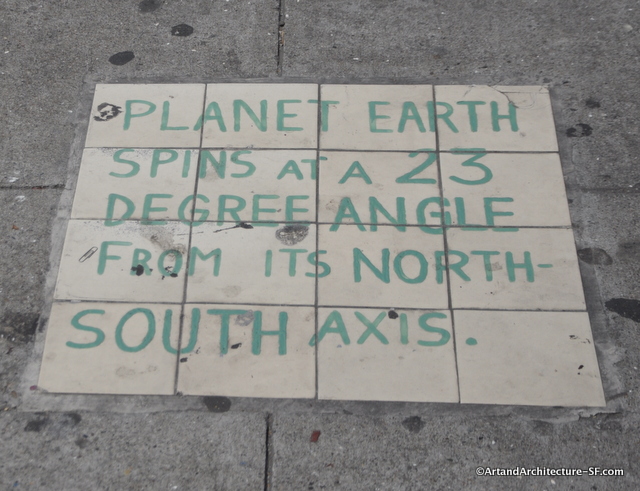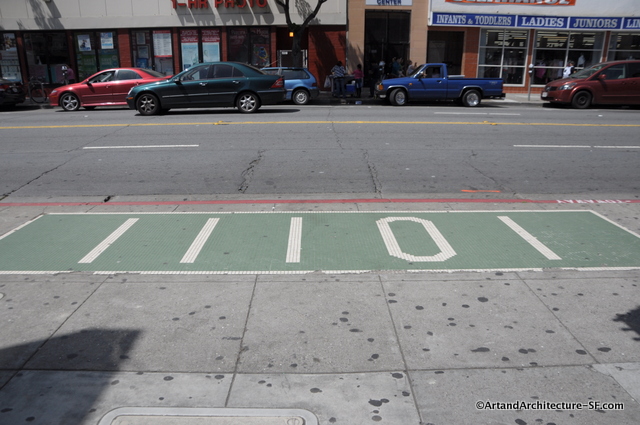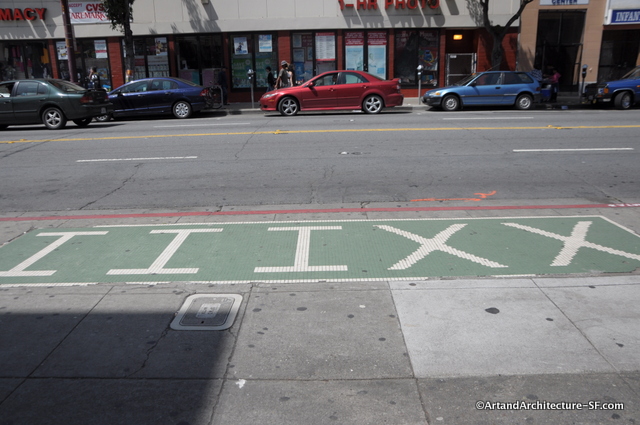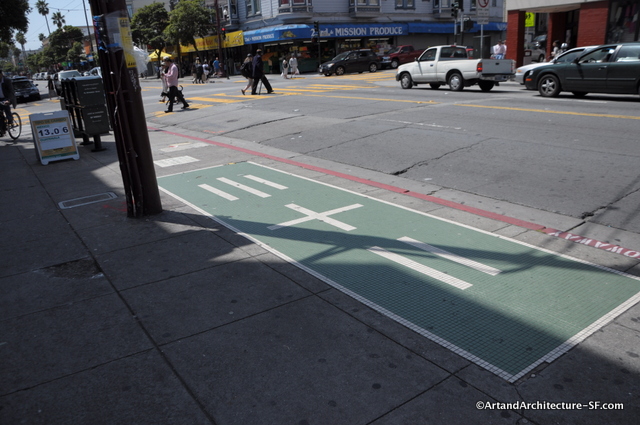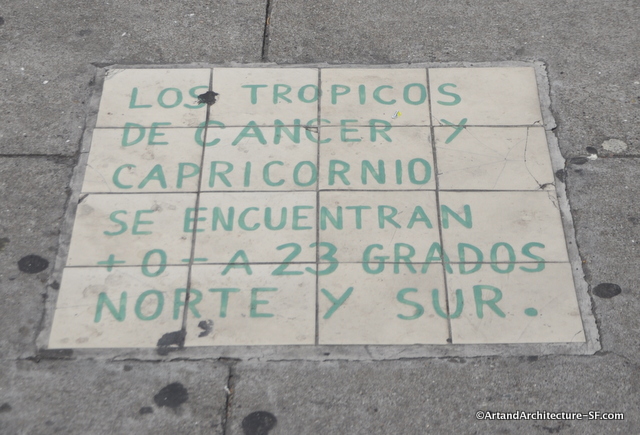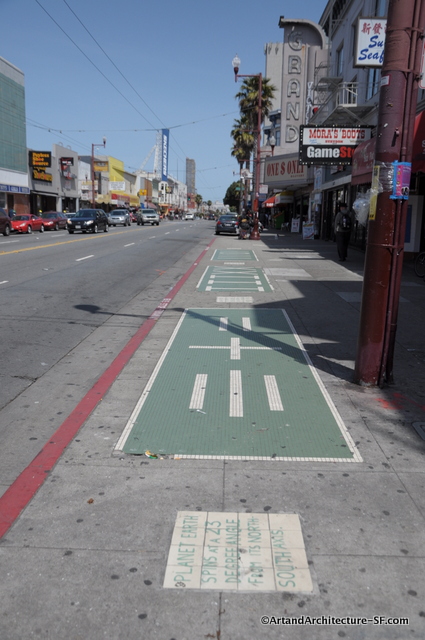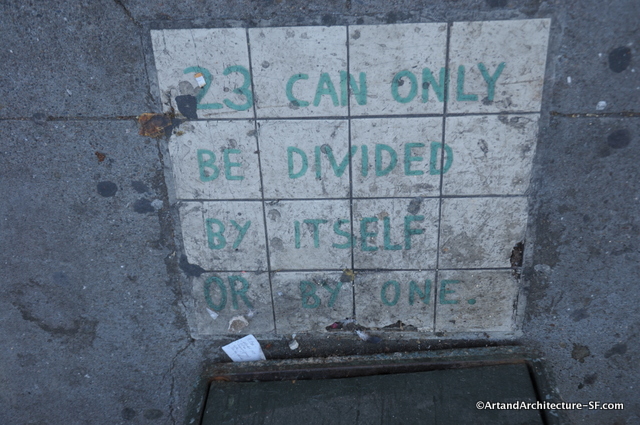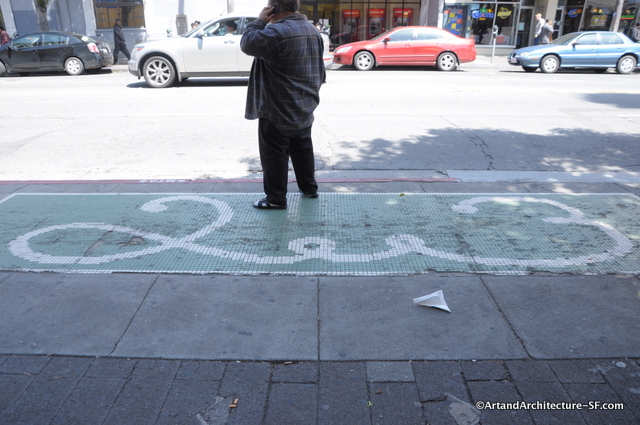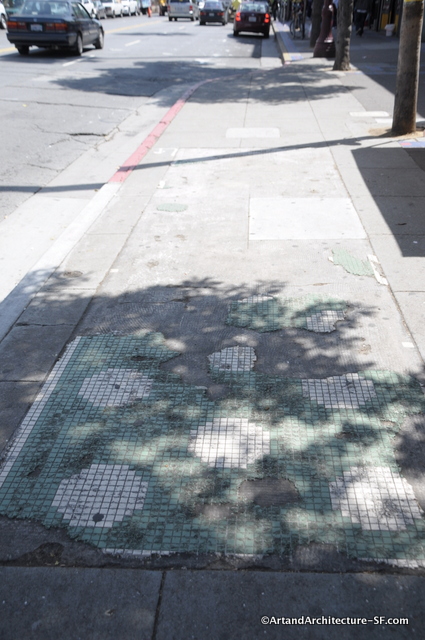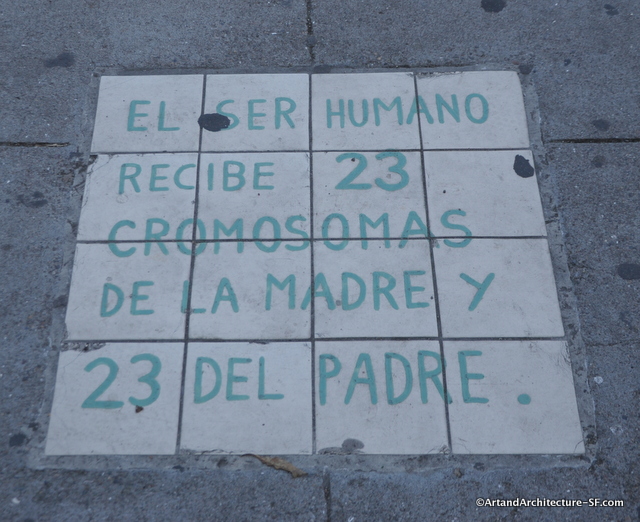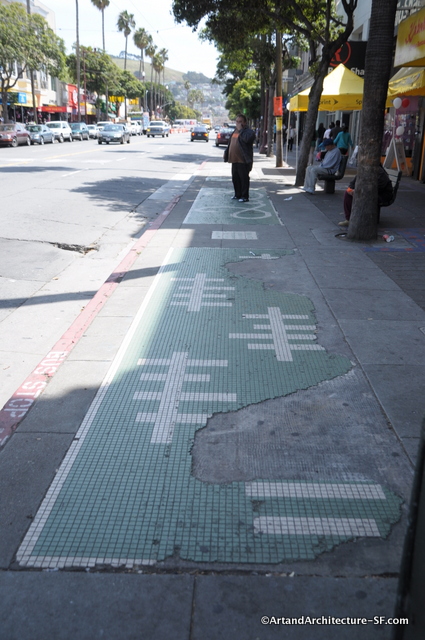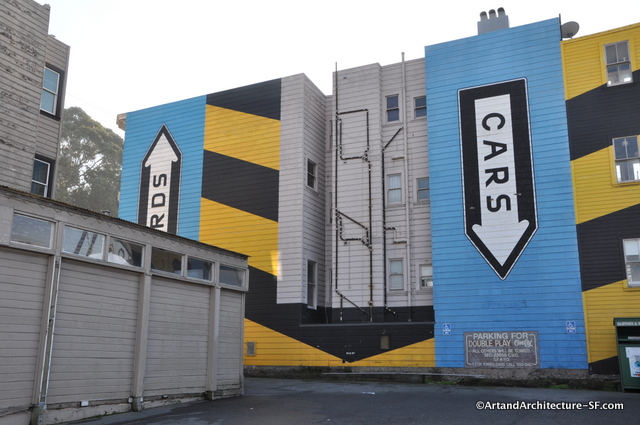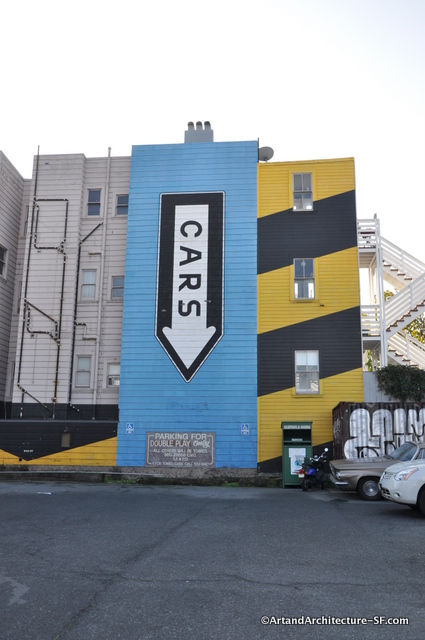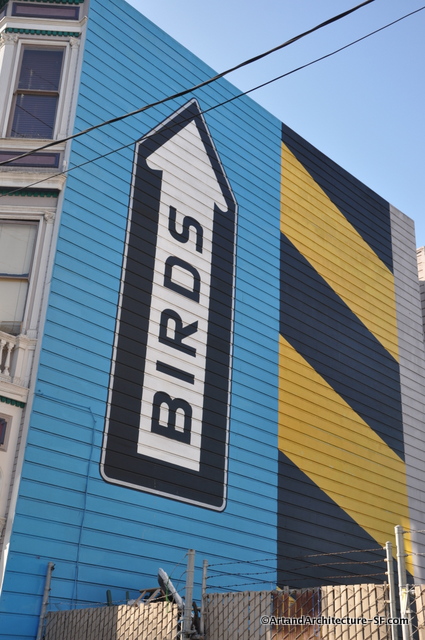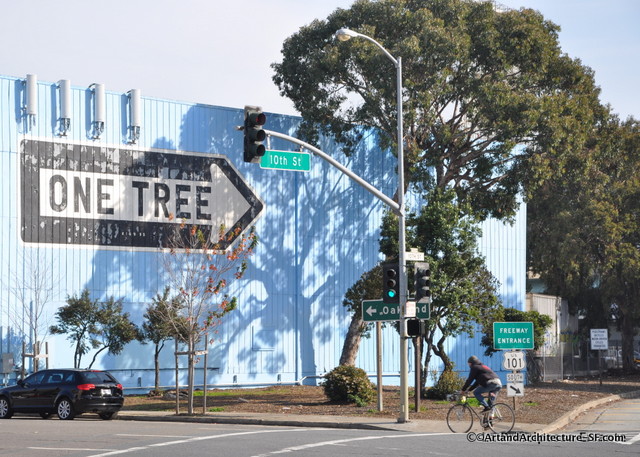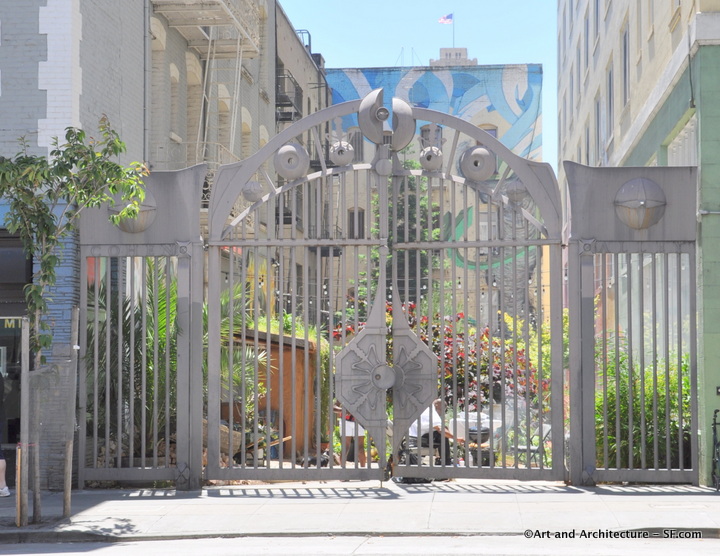Mission 23 is a multi-part mosaic tile art piece embedded in the north-east and south-west sidewalks of Mission Street at 23rd Street. On each one of the white squares is a sentence painted in green that provides a fact about the number 23. Each of the large rectangles is a graphic symbol of the number 23, in white against a green background, to mimic a standard street sign, all of 1-inch mosaic tile.
The number 23 holds a special significance for the artist known at the time as Rigo 2002. In addition to being the number of the street where his artwork is located, it is also the street number of his studio and the age at which he moved to the United States.
Rigo noted the importance of the number 23 in natural systems and these facts formed the basis of the four sentences, rendered in English and Spanish, in the sidewalk: “A healthy human being gets 23 chromosomes from the mother and 23 from the father.” “The planet earth spins at a 23 degree angle from its north/south axis.” “The Tropics of Cancer and Capricorn are roughly 23 degrees north and south of the Equator.” “The number 23 is only divided by itself or one.” The number 23 is described in the giant mosaic as symbols in the six large rectangles. They are shown as Binary code (10111), 23 dots, Roman Numerals, cursive, cross-hatching, and as “= + =” .
Rigo has work all over san francisco.
Rigo’s work sits on both sides of Mission at 23rd. This is the north-east side of the street. I find it appalling that the City of San Francisco’s Art Commission can not at least maintain what art they do know they have. They know of this damage as they have noted that fact on their web page where I found a description of the piece.
This first photo below is upside down because a garbage can is sitting where I would have like to have stood to take the photograph. It also explains why it is so filthy. The others are so badly damaged as to either be missing or completely illegible.
As a huge fan of Rigo23, I find it a shame that this work has been allowed to fall into such complete disrepair.
